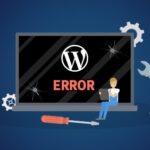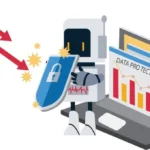
Joe Brew supported with syndromic surveillance during his two times as an epidemiologist for the Florida Department of Health beginning in 2013, which needed him to laboriously estimate the symptoms of cases visiting exigency apartments from each around the state. similar exploration aims to identify any unusual increase in symptoms in a region that could point to a public health issue.
This kind of surveillance is still used by public health authorities across the world. For case, a significant increase in the number of cases presenting to the sanitarium with symptoms of a respiratory illness with an unknown aetiology helped to identify the outbreak of a new pathogen in Wuhan, China, in late 2019. still, according to Brew, this system is unfit to stop the spread of a contagion like SARS- CoV- 2 since cases have likely formerly been contagious for a many days by the time they arrive at the sanitarium. also, COVID- 19 tests constantly fail to give results in time for cases to meetly insulate them while they’re contagious.
Public health agencies Each across the world continue to use this type of surveillance. For case, in Wuhan, China, late in 2019, a new pathogen was discovered after a large rise in the number of cases coming to the sanitarium with symptoms of a respiratory infection with an unknown cause. Pop claims that this approach is ineffective for halting the spread of a contagion like SARS- CoV- 2 since cases are likely formerly contagious by the time they reach the sanitarium. likewise, COVID- 19 test results generally are not available in time for cases to duly separate them while they’re contagious.
Pop, who’s presently the CEO of Hyfe, asserts that the only way to master Covid is by moving fleetly — in getting in front of it. Indeed without a vaccine, the epidemic may be effectively contained in those locales that were suitable to stop clusters and flights in their tracks.
Hyfe is a smartphone app that allows druggies to track the frequence of their coughs, for illustration, to see whether they’ve a respiratory illness or to partake this information with family members or health care providers. When the programme detects a loud, unforeseen noise, like a cough, it records that half-alternate scrap of sound and transforms it into a 3- D visual called a spectrogram that shows the pitch and intensity of the sound over time. A convolutional neural network, a machine learning fashion that processes spectrograms, is used to assay the data once it has been trained on a dataset comprising further than,000 noises, similar as a cough, chortle, grunt, belch, or a chopstick striking a plate.
Pop and a group of scientists want to test this idea in the real world to see whether they can identify an contagious respiratory complaint epidemic. In a bitsy city outside of Pamplona, Spain, their airman study will look at the cough data on a original position. The study’s top investigator, epidemiologist Carlos Chaccour of the ISGlobal Barcelona Institute for Global Health, told The Scientist that” numerous people are allowing about diagnostics, but everyone is allowing collectively.” still, the community approach hasn’t been laboriously pushed therefore far.
Pop acknowledges that there are othernon-infectious illness explanations for a cough, including air quality, asthma, disinclinations, and cooking smothers, but he claims that the lack of particularity is a point rather than a fault.” You are formerly looking for the contagion, and you are formerly in an epidemic situation” in the case of wastewater surveillance, which is another tool public health officers can use to laterally descry and cover the spread of contagious complaint, he claims, whereas Hyfe could, in proposition, descry a unforeseen flare- up from a new complaint before it advances to that point.
In order to test the idea, Chaccour and his associates hope to retain as numerous as 500 people in the neighbourhood. Actors in the study agree to allow experimenters access to their medical records and Hyfe data in order to see if an increase in coughing from a birth position correlates with fresh judgments of respiratory diseases, similar as COVID- 19.
Chaccour believes that if Hyfe can successfully show that its discovery of a advanced community prevalence in coughing precedes further respiratory judgments in the clinic, druggies will be suitable to view a heat chart of anonymized data indicating which communities have the loftiest frequence of coughing. This tool will be useful for both public health officers and individualities wishing to comprehend the threat of infection in a community.
An opportunity lost
The fashion for covering cough is frequently confined to a tone- report during a clinic appointment, despite the fact that it has long been a symptom that croakers
note. former studies have shown that cases constantly underreport their coughing, which has encouraged epidemiologists like Brew to believe that there’s untapped eventuality in collecting cough data.
Cases responding to questionnaires are fully inaccurate, according to Alyn Morice, head of respiratory drug at Hull York Medical School in the UK and an expert in the opinion and treatment of cough. He has indeed witnessed cases falsify data from peak inflow measures, which they use at home to estimate how well air passes through their lungs.
He believes that the benefit of the cough monitoring is that it’ll be unresistant, taking the case to do nothing.
The Scientist quotes University of Washington contagious complaint specialist Peter Small as saying he’s auspicious about this new frontier of technology, especially in the environment of eradicating tuberculosis. Small has advised Hyfe and handed seed backing to the company while he was the elderly health director of global health technologies at Global Good. Because grown-ups’ cough is constantly disregarded in our society, he claims, cases frequently seek care fairly late in the course of the complaint.
He imagines a script in which druggies who have been coughing more constantly than usual for, say, two weeks will get a textbook waking them of their symptoms and instructions to a free clinic where they may get tested for TB. The device, according to Small, may indeed be suitable to track the development of individualities with a known TB opinion. I have been around a lot of TB cases, and that opinion is really unsettling, he adds. Having concrete evidence that a case’s cough is perfecting might lift their spirits despite the fact that their condition is nearly always treatable.
There are other organisations as well as the Hyfe group aiming to include cough into a more important public health tool. For illustration, Morice created a system to notify druggies of imminent habitual obstructive pulmonary complaint( COPD) exacerbations — severe occurrences that constantly bear hospitalisation — using cough tracking through an external examiner they wear around their necks. According to data they presented at this time’s European Respiratory Society virtual conference, his study platoon set up that flare- ups in 45 of these cases were discovered on average four days before a opinion. Steroid or bronchodilator druggies can avoid or minimise the inflexibility of these exacerbations with early care, according to Morice.
He explains that precluding sanitarium admissions in these cases is healthier for the case as well as the health frugality because treating exacerbations is a expensive bid. A platoon from MIT sought to produce a fashion to see if it was doable to distinguish between coughs caused by COVID- 19. According to their paper published in October in the IEEE Journal of Engineering in Medicine and Biology, the experimenters reused further than,000 forced- cough audio samples through a machine learning algorithm, of which,660 were handed by individualities with COVID- 19. They claim that this algorithm directly linked98.5 percent of coughs from individualities who were verified to have COVID- 19, including 100 percent of forced coughs from those who were asymptomatic.
In other exploration systems, scientists are retaining healthy and COVID-19-infected people to help in training their AI models, which will ultimately allow druggies to determine whether they’ve the contagion grounded on their cough. These enterprise include the COVID- 19 Sounds design at the University of Cambridge, the Coughvid design at the Swiss Federal Institute of Technology Lausanne, and the Mumbai- grounded Wadhwani Institute for Artificial Intelligence’s Cough Against Covid. Apps that promise to be suitable to identify druggies’ coughs continue to pique Morice’s scepticism” honestly, I do not believe them. The only thing you can tell from the sounds of a cough is whether it’s wet or dry. The MIT study’s coauthors denied requests for interviews to explain their work.
Pop claims he wants to study the quotidian pattern of coughing in addition to better understanding the aural hand of colorful ails. For case, do persons with COVID- 19 frequently cough more at specific times of the day or night?” When do they start to cough? Does a change in cough frequence portend a certain outgrowth? Asked Pop. These are relatively simple questions, yet as of right now, nothing really knows the answers.
capturing audio raises privacy issues
Applications for COVID-19 that are officially state-sponsored are used by more than 40 nations as well as 21 US states and territories to help contact tracers stop the spread of the disease. Despite the potential of these applications, few Americans have downloaded them, in part because consumers are reluctant to give their government access to their extensive location history, according to Chaccour.
Any programme that tracks cough would also need users’ consent to track their location and collect audio through their cellphones, like Hyfe does to measure cough at a community level. Brew says he wants to reassure consumers that the software would only capture brief bursts of sound that lasted around a half-second. Nevertheless, he asserts that the user must receive some sort of value in return.
Applications for COVID-19 that are officially state-sponsored are used by more than 40 nations as well as 21 US states and territories to help contact tracers stop the spread of the disease. Despite the potential of these applications, few Americans have downloaded them, in part because consumers are reluctant to give their government access to their extensive location history, according to Chaccour.
Any programme that tracks cough would also need users’ consent to track their location and collect audio through their cellphones, like Hyfe does to measure cough at a community level. Brew says he wants to reassure consumers that the software would only capture brief bursts of sound that lasted around a half-second. Nevertheless, he asserts that the user must receive some sort of value in return.
One conception is to give a dashboard of druggies’ particular data that functions also to how Fitbit counts way. Before Fitbit made step counts fashionable 15 times agone
Still, Chaccour believes that rather of giving it to governments, it should rather be made available to private pots like Apple or Google so that they can incorporate it into their mobile operating systems, If the technology proves salutary. He has seen that although people in Spain do not trust the sanctioned government COVID- 19 app veritably much, they do not mind their phones harkening for them to spark the voice adjunct or keeping track of how important sleep they have gotten.




